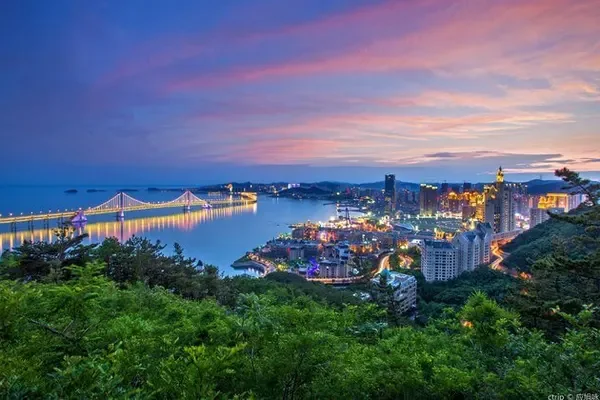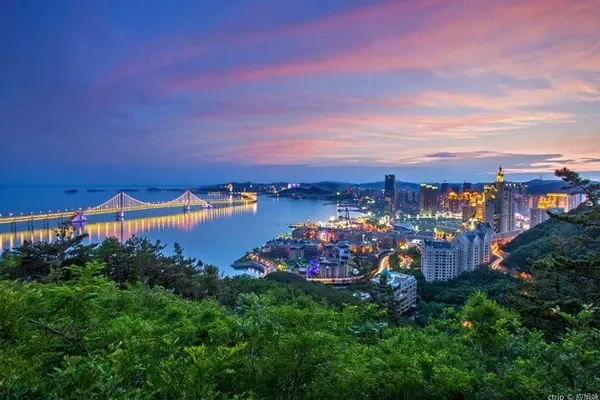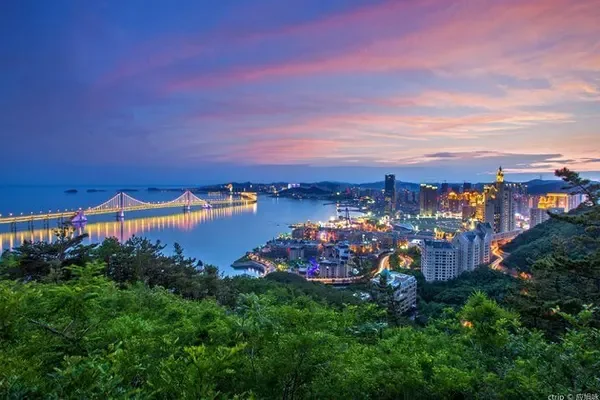There are a lot of inner city gates mentioned earlier, this city must not only have gates, but also city walls, right? The last time I looked at the ruins of the Yuan City Wall, the earth walls were basically piles of loess. There is still a section of the Ming City Wall. In 2000, Beijing seriously organized a reconstruction. Now it is the "Beijing Ming City Wall Relics Park".

This section of the city wall is from the east of Chongwenmen to the southeast corner tower. It can be seen that the bottom is the big bluestone, and the outer bricks are built on the bluestone. On it, you can see the new bricks that were rebuilt in 2000. The outer city bricks are still rammed earth, but not the soil of the Yuan Dynasty. This section of the city wall was moved southward in the Ming Dynasty.

There are trails built on the grass, and the surrounding Chongwen District, men, women and children often exercise here, walking or running.

For those who like to look at the city bricks, a trail is paved to the root of the wall, so that they can carefully observe the wall base and wall bricks of the Ming Dynasty. It’s okay to look at the wall, but it’s okay to climb the wall.

There are many trees outside the wall. I don’t know if they were originally installed in the Ming Dynasty or transplanted from Xiaoxing’an Mountains? Tried to ask someone knowledgeable about it, but couldn't find it.

In addition to trees without flowering, there are also trees in flower.

Of course, there are also those that will not bloom, which are very tragic, dug out of the ground and imprisoned in wooden barrels.

In Beijing dialect, when someone is shameless, he will usually say, "His skin is thicker than the bend of the city wall, and a machine gun can't penetrate it." Look at the turn of the city wall.

Below is the turn of the city wall of the Ming Dynasty, and some broken bricks of the Ming Dynasty were intentionally left on it. You see, the outside of the city wall here is not flat, it bulges out at intervals. This is called "pier platform", commonly known as "horse face", on which troops can be deployed to carry out three-dimensional strikes against the enemy who is besieging the city. It is said that there was a horse face on the city wall of the Yuan Dynasty, but there is no trace of it at the ruins of the city wall of the Yuan Dynasty in the north.

The golden light on the damaged wall is the "Golden Mountain of Beijing".

Go to the east end, you can see a building on the city wall.

Look up and watch the building on the city.

You can find Ludeng City inside the city wall and collect tickets. A figure-of-eight ladder was rebuilt, but there was no horse trail.

The horse path in the Ming Dynasty should look like the following, which is the ancient city of Guangfu, Hebei.

The Tucheng before the Ming Dynasty also had horse paths, which were also made of bricks and stones, like the one below, which was collected from Zhangbi Ancient Castle in Shanxi.

The horse path is for the coolie horses, which are the ancient transport of soldiers, guns, ammunition and the like.
Climbing up the city wall, it turned out that the building I saw just now was an archery tower.

Because it is at the southeast corner of the city wall, the two archery towers facing south and east are built on top of each other. The shape is the same as that of Deshengmen, which is one size smaller.
Go in and have a look, inside is a frame composed of several Tongtian columns and horizontal beams. There are floors and stairs along the arrow holes on each floor. These were rebuilt in 2000.

Looking out from the arrow hole facing east, you can see the train.

When I came out, I saw Beijing Railway Station below, and the train on platform 14 was leaving the station. When the Jingshan Line railway train enters Beijing Station, the watchtower seen outside the window is this arrow tower.

The top of the city wall is very wide, and it is not narrow when covered with small houses. These small houses are called bungalows. The soldiers guard outside during the day and lock the city gate at night to enter the house to sleep.

Looking at the archery tower from a distance on the city wall, it is very regular.

A new row of official rooms was built downstairs, nothing new. But there are two stone lions at the door, which are very special.

There is also a historical site here, called "Jingfeng Railway Signal Station", commonly known as the signal building.

The first section of the Jingfeng Railway is the Tangxu Railway built in the seventh year of Guangxu in the Qing Dynasty (1881), from Tangshan to Xugezhuang, 9.7 kilometers away, and it is used for coal transportation in Kaiping Coal Mine. The royal family of the Qing Dynasty was afraid that the train would damage Dongling and startle the ancestors who had not ascended to heaven in the underground palace, so it was a real horse-drawn car at first. The Jingfeng Railway was repaired and repaired, and it was not completed until 1930. Here is Zhengyangmen Station, and there is Liaoning Terminal (Shenyang Old North Station), with a total length of 862 kilometers. Take a look at Zhengyangmen Station on the east side of Qianmen, officially called "Jingfeng Railway Zhengyangmen East Station", commonly known as "Qianmen Railway Station". When the ring line subway was built, the building was moved. Now the south side of the bell tower is all moved from the north, and turned 180 degrees. This kind of movement is called "mirror image".

The Jingfeng Railway at that time was designed by the British, and it was the same as the current railway standard, with 50Kg/m steel rails, 1435mm gauge, wooden sleepers, and gravel track beds.
The railway signal station at that time was equivalent to the current dispatch center, and it was the hub for commanding train operations. The dispatcher sits behind a large second-floor window in the picture above, allowing for an easy lookout. The signal equipment in those days was very simple, and the turnouts were hand-operated; there were no traffic lights, but flags, which were called "arm board signals". Speaking of switching switches, a section of steel rail was dug out in front of this old signal building when the Ming City Wall Relics Park was being built to clear the ground.

This is a part of the turnout, called "fork". This section of rail looks like 43Kg/m, not 50Kg/m.
The nine gates in front of the old city wall in Beijing are all works of the Ming Dynasty and continued to be used until the Qing Dynasty. Although the economy in the Qing Dynasty was very developed, quantitative changes did not lead to qualitative changes, and there was no pursuit of transportation and logistics. Moreover, Manchu is short-sighted and does not have a long-term strategic vision. When the Manchu entered the pass and won the Great Ming Dynasty, his strategic goal was realized, and he thought he was on top of the world. Therefore, although the Qing Dynasty was established on the shoulders of the giants of the Ming Dynasty, it did not have much innovation. It just continued to rule along the rules of the Ming Dynasty and extremely rejected Western technological progress. When the progressive forces discovered that the development of the Qing Dynasty had fallen behind the West, or even Japan, it was too late to rise up. The Japanese occupied Beijing during the July 7th Incident. They believed that a city like Beijing could no longer meet the needs of modern transportation and logistics development. They dug openings in the east and west walls and built two gates. The east one was called Qiming Gate and the west one was called Chang'an Gate. A Japanese city has no walls, but a cottage centered on a fortified castle like in the West, usually built on high ground. This way of building cities is not learned from China, they have been like this since ancient times, and it is certainly not learned from the West. After the victory of the Anti-Japanese War, the national government renamed Qimingmen on the east as Jianguomen, and Chang'anmen on the west as Fuxingmen, which have been used to this day.
In 1926, in order to facilitate transportation, a passage was added between the city of Nancheng and the residence of the inner city, and another gate was opened between Xuanwumen and Zhengyangmen. There is no tower or anything like this gate, but two 10-meter-wide coupon gates are opened on the city wall. This gate connects the north and south Xinhua Streets. It was originally called Xinhua Gate and was renamed Heping Gate in 1927. In 1958, the two gates were already impassable, so the city wall was simply dug open and became a gap. There was still a gap in the north side of the inner city wall, and the place name is still there, which is the gap between Xinjiekou and Beixiaojie.
After the Second Opium War in 1860, the Qing court agreed with certain western countries to open embassies in the inner city outside the imperial city of Beijing. When the emperor was still there, except for the royal family, all people were people, even foreigners were also people, and people who handled international exchanges were Jiaomin. These legations were all located on the north and south sides of Jiangmi Lane at that time. Later, Jiangmi Lane was renamed Jiaomin Lane, and it was divided into Dongjiao Minxiang and Xijiaomin Lane with Yuhe as the boundary. In the Qing Dynasty, the Yuhe River flowed from north to south through the water pass between Zhengyangmen and Chongwenmen into the South Moat, and horses and chariots could be used along the east and west sides of the river. The Boxer Rebellion in 1900 loved to beat foreigners, and once shouted "Eat noodles without sauce, and shoot Jiaominxiang". Afterwards, fearing that they would be trapped inside again, those communists opened a door at Shuiguan, through which they could climb out of the city and run to Qianmen Railway Station, and then go to Tanggu Port to board a boat and go home. This is "Shuiguanmen", which is located at the south entrance of Zhengyi Road, facing Zhengyi Road. There is only one arch gate in Shuiguan Gate. Later, the Yuhe River was covered and turned into an underground river, with a green belt on it, and the riverside on both sides is now Zhengyi Road.
These are the gates of the inner city of Beijing, nine old gates, four new gates, and two gaps in the north. The Beijing Ring Subway is the current Line 2, which runs around the inner city wall. In the 1950s, part of the inner city gates and city walls were demolished, and in the 1960s when the ring subway was built, all of them were demolished, leaving Deshengmen Archery Tower, Zhengyangmen Gate Tower and Archery Tower. Fortunately for Zhengyangmen, it is not easy to preserve the Deshengmen archery tower. Why do you need to tear down the city wall to build the subway? In the 1960s, the construction of subway tunnels and stations was done by open-cut method, that is, the cover was opened on the ground, which was really earth-shaking. After the underground tunnel and station were repaired, they were buried with soil, and then the Second Ring Road was built on it. The earliest South Second Ring Road is now Qiansanmen Street. You can imagine how big the subway project was at that time, and several divisions of the infrastructure engineering corps at that time were seriously dispatched to participate in the construction. The soil layer above the roof of the subway tunnel is called the buried layer. Now there is no open-cut tunnel for subway construction. Even if the buried layer is very shallow, underground excavation construction can be used, which is called shallow buried underground excavation construction method. Underground digging was manual at first, and it was very laborious. Nowadays, machines are used, that is, a large drill bit. This drill bit for digging tunnels is called a shield machine. The station is not good, the area is too large, and the support lining is too difficult. Now there are still many open-cut constructions. Therefore, when Beijing built the ring line subway, all the remnants of the inner city wall were cleaned up.
Since there is an inner city, there must be an outer city, right? Let's talk about it in the next episode.


